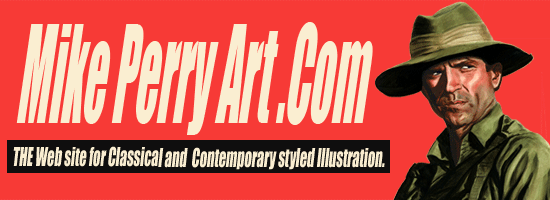In this next installment of my interview with AEG I discuss my creative process and a bit about the evolution of the Assassin character. Check it out Here
Or you can read it right here.
"Mike, do you have specific processes to your work? What’s something you figured out that’s kind of unconventional?
Specific process…. Whenever possible I try to stick to the tried and true method of developing an illustration laid out by the masters. That includes rough sketches, studies, finished drawing, color rough, and then the final illustration.
Let’s start with the image of the pig farmer. The development for
this character went about as smoothly as you can get. Both the art
director [ed.--AEG's own Todd Rowland] and I had a clear vision for this
character. The only change required from sketch to final was that he
needed to look a bit happier.
However, the Assassin was another story. Initially, the brief
called for this character to be more of your back alley thug type. I
would describe him as a “greasy knife in the back for a copper” kind of
guy. The initial sketch pretty much nailed the concept but the team
wanted to see options for a change in his pose.
At this point, there was some thought that this character could
look a bit more “current,” and this is when we brought in the robes and
talked about making him look younger.
We went through about five sketches and eventually settled on the posture from #4 and the costume from #5.
My process for painting is pretty straightforward. I start off with
an under drawing and then paint over top of it like I would with
traditional media. Then I start laying in the basic colors which is
sometimes called “ flatting” to help establish my color scheme and basic
value structure.
Once I’m happy with that, I move into modelling ( sometimes called
rendering) the forms to establish the shapes and details. In this
instance, you can see how the painting evolved along with the character.
Initially I painted his legs thinking that he would be wearing hose as
well as he had an older face. As the design changed, I had to paint over
the legs and add in the robe and new face. Thankfully Photoshop allows
me the flexibility to do this on the fly.
If I was still working in traditional media like oils, these types
of changes would be doable but would have taken a lot longer. Once the
rendering stage is complete, I clean up the silhouette, add a few
adjustment layers to tweak the image, flatten it and send it off to the
client.
For more information on my work and for process animations and demos, please stop by either my website www. mikeperryart.com or my blog http://mperryart.blogspot.ca.
If you have any questions or would like to say hi, I would love to hear from you. You can best get a hold of me via email at mike@mikeperryart.com.
Cheers!"
For some reason, the process images that I submitted for this article were not posted on the AEG site but I directly refer to them which must be confusing to readers. Anyways, for clarity sake, here are the images that I was referring to.
As always, thanks for stopping by.




No comments:
Post a Comment